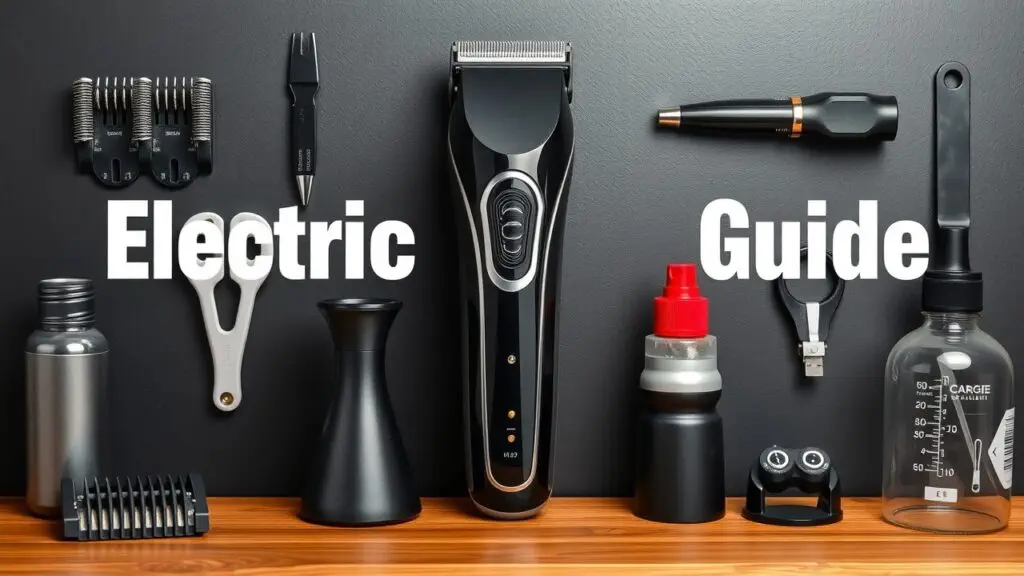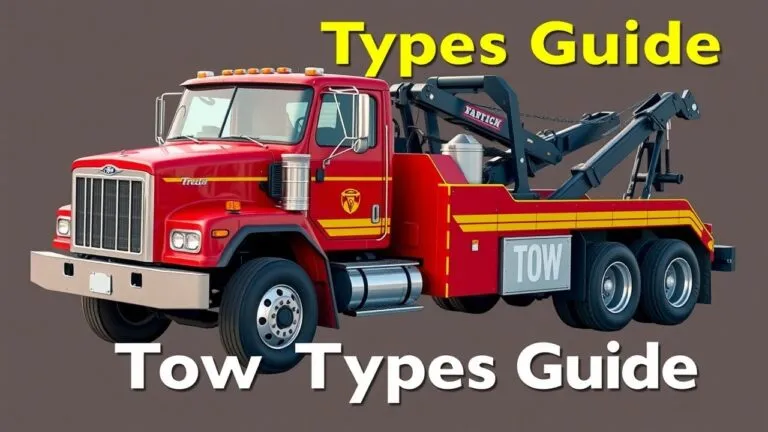Types of trimmers range from cordless clippers to detail trimmers. This guide compares hair, beard, and nose trimmers, covering features like battery life, blade material, and motor power to help you find the best one.
What Are Trimmers and Their Importance?

Trimmers are special tools that help with grooming and landscaping. They come in different types, each suited for specific tasks like personal grooming or yard work. Knowing the various types of trimmers can help you pick the right one for your needs.
Difference Between Trimmers, Clippers, Razors, and Other Tools
Trimmers, clippers, and razors are often mixed up, but they have different uses:
- Trimmers: Best for details, trimmers shape hair and give clean finishes. Their small blades offer great control.
- Clippers: These tools have bigger blades and cut hair quickly. They’re perfect for full haircuts.
- Razors: Made mainly for shaving, razors give a close shave but aren’t as versatile as trimmers.
Picking the right tool is key to comfort and efficiency. Using the wrong tool can lead to irritation or discomfort during use.
Why Choosing the Right Type of Trimmer Matters?
Selecting a good trimmer makes a difference in how easy it is to groom yourself or maintain your yard. A suitable trimmer helps avoid skin irritation and allows you to achieve precise results. Whether it’s keeping a beard neat or trimming around garden beds, having the right tool matters.
Types of Applications for Trimmers
Trimmers have many uses in personal grooming and landscaping tasks:
- Personal Grooming: A common use is hair trimming. Electric beard trimmers are popular because they help maintain facial hairstyles without cuts.
- Landscaping Tasks: Grass trimming is done using specialized tools like string trimmers that handle thick grass well. Hedge trimmers keep shrubs looking neat.
Besides these main uses, some folks use trimmers for detailed work like edging sidewalks or making patterns in lawns with edging tools. This shows just how useful these precision tools can be for home care or professional tasks.
Types of Hair Grooming Trimmers
Electric Hair Trimmers Explained
Electric hair trimmers are handy tools for grooming. They make the process quick and easy. You can find different types, like corded, cordless, rechargeable, and battery-powered models. Knowing these options helps you pick the best one for your needs.
Corded vs. Cordless Electric Hair Trimmers – Pros & Cons
Corded electric trimmers give you consistent power. This is great for long sessions or when you need reliable performance, like in salons. But they can limit your movement because of the cord length.
Cordless electric trimmers are flexible and easy to use. You can move around without worrying about a cord getting in the way. These trimmers use rechargeable batteries or disposable ones but may need charging often. The best hair clippers for home use usually offer both options to fit different preferences.
Rechargeable Battery Options and Runtime Considerations
When choosing an electric trimmer, think about the battery type. This affects how long it runs and its overall performance. Lithium-ion batteries are common since they last long and charge quickly. In contrast, Nickel-Metal Hydride (NiMH) batteries might not run as long but tend to cost less.
Rechargeable options let you groom without being tied to a wall outlet. This is super handy when you need to trim quickly.
Blade Materials Comparison: Titanium vs Ceramic vs Stainless Steel Blades
The material of the blades is important for trimming quality:
- Titanium Blade Trimmer Benefits: These blades are tough and resist rusting, staying sharper longer than other options.
- Ceramic Blade Durability: Ceramic blades remain sharp and create less heat during use—great for sensitive skin.
- Stainless Steel Blades: While stainless steel may dull faster than titanium or ceramic, they provide solid cutting performance at a lower price.
Choosing a blade material depends on what you need—durability or gentleness on your skin will guide your choice.
Best Electric Hair Trimmer Models by Features
Some top-rated electric hair clippers stand out due to unique features like zero-gap functionality or adjustable guards:
- Zero-Gap Functionality Models: These allow very close cuts without causing irritation.
- Adjustable Guards on Electric Groomers: These offer different lengths so you can style easily according to your preferences.
These features make certain models appealing whether you’re grooming at home or working as a professional barber.
Understanding Nose & Ear Hair Removal Tools
Nose and ear hair trimmers help keep you looking neat and clean. These tools are made to trim unwanted hair safely. They often use a rotary mechanism, which means they can cut hair without hurting your skin. Many models are compact, making them easy to hold and control.
A big plus of these trimmers is the hypoallergenic tips. These are great for people with sensitive skin since they lower the chances of irritation. Safety is super important when using these tools in delicate areas like your nose and ears. Picking a trimmer that has good safety features helps prevent accidents.
Top Picks for Nose/Ear Grooming
| Trimmer Model | Key Features | Battery Life |
|---|---|---|
| Trimmer A | Rotary design, waterproof | Up to 60 minutes |
| Trimmer B | Hypoallergenic tips, LED light | Rechargeable |
| Trimmer C | Compact size, quiet operation | Up to 90 minutes |
These trimmers are designed just for grooming nose and ear hair. Users love how easy they are to use. Many come with shapes that fit well in your hand. Plus, long battery life means less time worrying about recharging.
Body Hair Groomers – What Sets Them Apart?
Body hair groomers are different from regular trimmers because they work better on larger areas like your chest or back. A lot of these groomers can be used in the shower since they are waterproof. This makes grooming easier and quicker.
These tools usually have wider blades compared to standard models. This helps you trim larger areas more efficiently without needing multiple passes. So, you can get smoother results faster.
Recommended Body Groomer Options
If you’re looking for body groomers, here are some options for men and women:
- Men’s Body Groomers: Look for those with various attachments for different lengths; some even come with precision heads for detailed work.
- Women’s Body Groomers: Often have softer edges and may include features like moisturizing strips for comfort during shaving.
Each type serves a different purpose: some focus on cutting large areas while others are great for precise trimming around sensitive spots like underarms or bikini lines.
Overview of Landscaping Trim Tools
When it comes to keeping your yard looking great, knowing about landscaping trim tools is key. These tools are made for specific jobs and can help a lot with gardening or landscaping projects. The main types of trimmers are string trimmers, hedge cutters, and edgers.
String Trimmers
String trimmers, often called weed eaters or grass trimmers, are handy tools for cutting grass and weeds in spots where lawn mowers can’t go. They use a spinning nylon line to effectively slice through plants. You can find both gas-powered and electric models of string trimmers, so you can pick what works best for you.
Applications:
- Great for edging along sidewalks.
- Perfect for trimming around trees and flower beds.
- Useful in tight areas where bigger tools won’t fit.
Hedge Cutters
Hedge cutters are made just for shaping hedges and bushes. They have long blades that easily cut branches while helping you shape your plants as you like. You can find both manual shears and powered versions (electric or gas) to keep your shrubs tidy.
Applications:
- Shaping hedges into neat designs.
- Pruning overgrown bushes to keep them healthy.
- Maintaining privacy screens with thick leaves.
Edgers
Edgers are used to create sharp lines between lawns and flower beds or driveways by cutting a trench along the edge of the grass. This tool helps mark boundaries clearly and stops grass from spreading into walkways or gardens. Edgers can be either manual or powered; powered ones usually make the job easier with less effort from you.
Applications:
- Making crisp borders around flower beds.
- Improving curb appeal by defining lawn edges clearly.
- Stopping soil erosion at the edges of gardens.
Each type of landscaping trim tool has special features that suit different tasks, making them vital for anyone wanting precise control over their outdoor space.
Trimmer Comparison: Key Features at a Glance
When picking the right trimmer, it’s super helpful to know the types you can choose from. This table shows three main types: electric, manual, and rotary. Each one has special features that help with different grooming needs.
| Feature | Electric Trimmers | Manual Grooming Tools | Rotary Trimmers |
|---|---|---|---|
| Power Source | These can be corded or cordless. Many use batteries for easy handling. | No power needed; just your hands doing the work. | Usually electric, but some models have rechargeable batteries. |
| Speed | High-speed motors let you trim fast—great for busy people. | Your speed depends on how fast you can move your hands; usually slower than electric ones. | They trim at a steady pace because they are motorized. |
| Precision | Great for precision with adjustable guards and special blades. | How precise it is really depends on how skilled you are. It can be very accurate if you know what you’re doing. | They offer decent precision, but practice makes perfect! |
| Cost | Prices vary from budget-friendly to high-end pro tools. | Usually cheaper but requires more skill to use well over time. | Middle-range prices that often show their quality and durability. |
| Maintenance | Clean them regularly and oil the blades sometimes for best use. | Very little upkeep is needed except for cleaning after use. | Need regular cleaning, especially if used a lot in salons. |
| Use Cases | Perfect for personal grooming like beard trims or haircuts, plus great for barbers too. | Best for detailed work where control matters most, like shaping mustaches. | Common in salons or barbershops for efficient haircuts. |
Best Hair Types
Picking the best trimmer also depends on what kind of hair you have:
- For coarse hair: Electric trimmers with titanium or ceramic blades last longer.
- For fine hair: Manual tools give more control and don’t tug as much.
- Versatile options: Rotary trimmers handle both coarse and fine hair pretty well.
Knowing these differences helps you choose the best tool based on your needs—whether you’re grooming at home or working as a pro barber.
Choosing the Right Trimmer: A Step-by-Step Guide
Consider Your Hair Type
Picking the right trimmer starts with knowing your hair type. Each trimmer works better with certain textures. If you have thick or coarse hair, find a heavy-duty trimmer. These are made to cut through dense strands without tugging. They often have strong motors and sharp blades.
For thin or fine hair, lightweight trimmers are the best choice. They offer more control and precision, which helps during grooming. The best trimmers for beards usually have adjustable settings to fit different styles and lengths. Men’s grooming often benefits from this versatility. Women might want specialized women’s trimmers that are gentle for delicate areas while still providing a smooth finish.
Identify Your Trimming Needs
Think about what you want from your trimmer. Do you need tools for body part grooming? Whether it’s a beard, mustache, nose hairs, or body hair, choose a tool based on those needs. If you’re into detail work, look for detail trimming tools. They often come with various attachments to let you cut at different lengths.
It also helps to know how precise you need to be. Some tasks may need more finesse than others. For instance, trimming your beard might require a model that offers several guard sizes to avoid cutting too much.
Set Your Budget
Your budget matters when it comes to buying a trimmer. Prices can vary quite a bit based on features:
- Best Trimmers Under $50: These are basic models good for occasional use.
- Best Trimmers Under $100: Mid-range options that offer better durability and features like self-sharpening blades.
- Best Trimmers Under $200: High-end devices with advanced features like waterproof designs and extra attachments for professional results.
Having a budget in mind helps you narrow down your options while ensuring good value.
Essential Trimmer Features
When shopping for a new trimmer, certain features can really improve your experience:
- Waterproof Designs: Waterproof trimmers make cleaning easy since you can rinse them off after use.
- Attachments: Look for grooming kits that come with different heads or guards suited for various tasks; this adds versatility.
- Self-Sharpening Blades: This feature keeps your blades sharp automatically so you get consistent performance over time.
By considering these features alongside your personal preferences, you’ll be set to pick the right trimmer that meets all your grooming needs effectively.
Trimmer Maintenance and Safety Tips
Keeping your trimmer in great shape is key for it to work well. Good maintenance makes sure your grooming tools last longer and are safe to use during haircuts or other tasks.
Cleaning Your Trimmer
It’s really important to keep your trimmer clean. This stops hair and dirt from building up, which can mess with how well it cuts. Here’s what you can do:
- Use a small brush or air blower to clean out the hair and debris. Make sure to unplug electric models like cordless hair clippers or beard trimmers before you start cleaning. This helps avoid any accidents.
- Choose mild detergents or cleaning solutions made just for grooming tools. They help keep everything hygienic without hurting the blades.
After using your trimmer, take a moment to remove hair clippings and dirt. Doing this will help your trimmer last longer!
Maintaining Trimmer Blades
Taking care of the blades is super important for how well your trimmer works. Here’s how to do it:
- Oiling Techniques: Just a few drops of oil on the blades can help them run smoother and last longer. Make sure you follow the instructions from the manufacturer about how much to use.
- Sharpening Options: Different blade materials need different care. Ceramic blades don’t need sharpening as often as stainless steel ones do. If they start to get dull, think about getting them sharpened professionally.
- Replacement Indicators: Keep an eye out for when it’s time to change your blades. If they feel dull or damaged, that’s a sign they need replacing.
Safe Trimmer Use
Safety is super important when using any grooming tool. Here are some tips:
- To avoid pulling skin while trimming, hold the skin tight, especially around sensitive areas like eyebrows and necklines.
- Always follow the instructions from the manufacturer about how to hold the trimmer and how much pressure to use while grooming.
- After each use, store your trimmers safely. It’s smart to get protective cases if you travel with them.
Additional Maintenance Considerations
You might want to check out low-maintenance options like waterproof trimmers that are easy to clean and use comfortably. The frequency of maintenance checks should match how often you use your trimmer; if you’re trimming regularly, make sure you have a routine for cleaning and checking its condition.
Taking good care of your trimming tools will help them work better and keep you safe while grooming!
Frequently Asked Questions (FAQs)
What are self-sharpening trimmers?
Self-sharpening trimmers have blades that sharpen themselves during use. This feature ensures consistent cutting performance. These trimmers save time and maintenance effort.
How do clipper guards and trimmer attachments work?
Clipper guards and trimmer attachments adjust cutting lengths. They come in various sizes to achieve different styles. These tools help users customize their grooming experience easily.
What are zero-gap and fade trimmers?
Zero-gap trimmers cut very close to the skin for a clean finish. Fade trimmers help blend hair lengths seamlessly. Both are essential for detailed grooming.
What is the difference between detailing and contouring trimmers?
Detailing trimmers focus on precise hair removal in small areas. Contouring trimmers shape hair into specific styles. Both tools enhance your grooming routine.
Which grooming tools are suitable for men and women?
Men’s grooming tools include beard, body, and mustache trimmers. Women’s tools often feature eyebrow and bikini area options. Both cater to specific hair removal needs.
Additional Topics to Explore
Best Trimmers for Various Needs
- Hair cutting trimmers excel at maintaining hair length.
- Facial hair trimmers provide precise trimming around the face.
- Body hair groomers focus on larger areas like chest and back.
- Nose hair trimmers offer safe solutions for sensitive areas.
Low-Maintenance Trimmer Options
- Waterproof models allow easy cleaning.
- Lithium-ion battery models provide long runtimes.
- Durable materials extend the life of your tools.
Understanding Trimmer Brands
- Wahl trimmers are known for professional quality.
- Andis offers advanced technology for barbers.
- Panasonic provides versatile options for home use.
- Remington focuses on affordable, reliable models.
- Philips has unique designs with modern features.
Types of Grooming Tools to Consider
- Rotary vs. T-blade trimmers each serve different purposes.
- Cordless vs. corded models suit various preferences.
- Explore options like high-torque or ergonomic designs for comfort.
Trimmer Maintenance Tips
- Regular cleaning keeps blades sharp and effective.
- Oil your blades to prevent rust and friction.
- Replace worn parts promptly to maintain performance.
These topics cover remaining keywords while enhancing your understanding of various types of trimmers available today.
Related Topics
- Types of electric hair trimmers
- Types of hair grooming trimmers
- Types of trimmer blades
- Types of trimmer batteries
- Types of nose and ear hair trimmers
- Types of body hair groomers
- Types of grooming tools
- Types of trimmer maintenance
- Types of hair



Types of Trimmers: A Complete Guide to Hair, Beard, and More